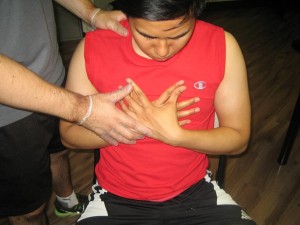Implantable cardioverter defibrillator (ICD) is a small-sized, battery-powered device that restores the normal rhythm of the heart. It is placed beneath the skin in the chest.
The device is linked to wires that transmit the electrical signals to the heart. The doctor will set the device to monitor the heart rhythm and transmit these electrical signals if needed. These signals cause the heart to beat in its regular phase.
Once the heart rhythm is too fast, slow or erratic, the device initially attempts to control the rhythm with low-level electric signals. If not effective or the rhythm worsens, the ICD transmits a high-level shock to the heart. The individual can feel the shock and it can be slightly uncomfortable.

When is an implantable cardioverter defibrillator needed?
In case the heart could not beat regularly due to an issue with the electrical signal or impairment to the heart, an implantable cardioverter defibrillator is needed. Most devices can function both as a pacemaker and an ICD.
The device can be used to help heart conditions such as:
- Dangerous heart rhythms that can be triggered by a heart attack, heart disease or other health ailments.
- Very fast, slow or erratic heart rhythm.
- Atrial fibrillation
- Heart failure
Self-care measures
If an individual has an implantable cardioverter defibrillator, he/she might have reduced heart and breathing issues and feel better than before the procedure was carried out. The heart rhythm is restored, and the individual can resume his/her normal lifestyle.
Some of the healthy lifestyle changes include:
- Healthy diet
- Limit the intake of caffeine
- Maintain a healthy weight or cut down if overweight
- Proper management of stress
- Regular exercise
- Cessation of smoking
Regular appointments with the doctor is needed so that the device is monitored. During check-ups, the doctor will check the settings of the device, battery and the heart.
